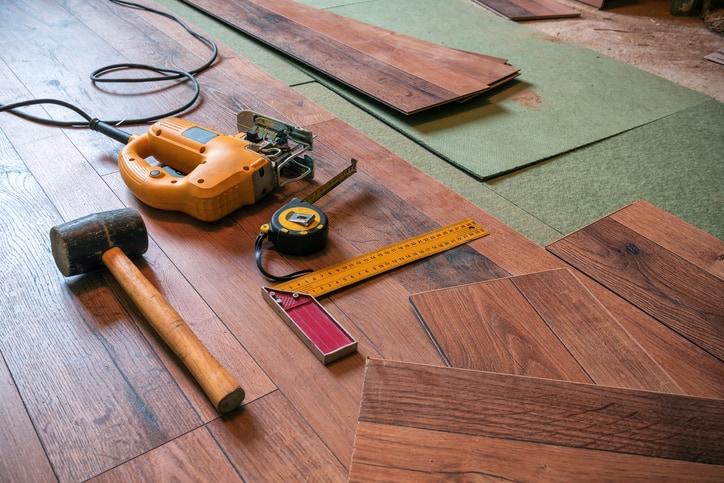
Vinyl plank flooring is affordable, easy to maintain and provides a quality flooring option that can mimic many desired materials. The incredibly realistic designs can look like real wood, hardwood, stone or ceramic but at much lower prices than the real thing. With so many options, the words used to describe vinyl products are hidden behind another layer of “branding” and can become confusing even to professionals. Vinyl is called LVT, WPC, SPC, Rigid Core, Rigid Core Hybrids!!! It goes on!!! And, they add new names every day to brand it.
Vinyl offerings can be broken down by how they are installed – which also determines what kinds of foot traffic they will stand up to best. Another quality that is important in understanding vinyl products is how durability is achieved.
Durability is achieved in the top wear layer
Luxury Vinyl Tiling (LVT) is not that complicated when you understand how it is made. There is a wear layer that is built for durability. Many LVT products describe this layer in mil or ml, and while there is not a set standard all producers follow, just know that it is a measurement of how thick the “wear” layer is.
There are 5 layers of vinyl flooring: a backing, a core vinyl layer, the print layer, the wear layer, and then a top coating to protect against scratching and UV.
Installation Methods: Glued or Floating
From an installation point of view, there are 2 main types: Glued or Floating.
Glued tiles and planks can also be broken down by how they are applied- are they glued down, or do they use a self-adhesive backing? Glued products require 24 to 48 hours for the glue to cure. There are two main types of glued products – hard set or pressure sensitive.
Hard set holds flooring firmly in place and is ideal for hospitals and places where rolling traffic is common.
Pressure sensitive is also glued firmly in place but can be more easily replaced. So this kind of LVT is good for places that change more frequently for branding purposes like hotels and retail.
Floating products can be used immediately after installation and include vinyl click flooring and loose lay vinyl flooring.
Rigid Cores (WPC and SPC) – “Water Proof Core” and “Solid Polymer Core”
Under the LVT umbrella of products are inflexible vinyl (rigid ) core types. There are various names for the different types of inflexible vinyl- WPC, rigid core LVT, stone core LVT, SVT, SPC and more.
These characteristics allow them to be installed over subfloors with minor imperfections with little or no floor prep. They can even be installed over ceramic tile floors without filling the grout lines. This makes their installation easier, and able to be used in more situations.
WPC products are able to have deeper embossing than SPC products, and have a foamed core which causes them to be lighter. These foamed cores are softer on your feet, warmer and quieter.
SPC (solid polymer core) is up to 75% limestone with no foaming agent. It causes them to be heavier and more difficult to cut. The stone content gives them more durability and more impact and dent resistance. So, SPC is a great choice for high foot traffic areas and we find them to be a great fit for commercial environments.
SPC floors are less expensive than WPC. The methods involved in manufacturing gives WPC more comfort benefits and the foaming of the core material leads to the pricing being higher than SPC. When considering which to choose, it is more important to pick the kind that makes the most sense for its intended use than the price points. (Source: LVT Evolution: What are the key differences between WPC and SPC?)
Contact Mansfield Flooring via our online form or call us at (817) 225-4777 today to schedule an in-home consultation!
